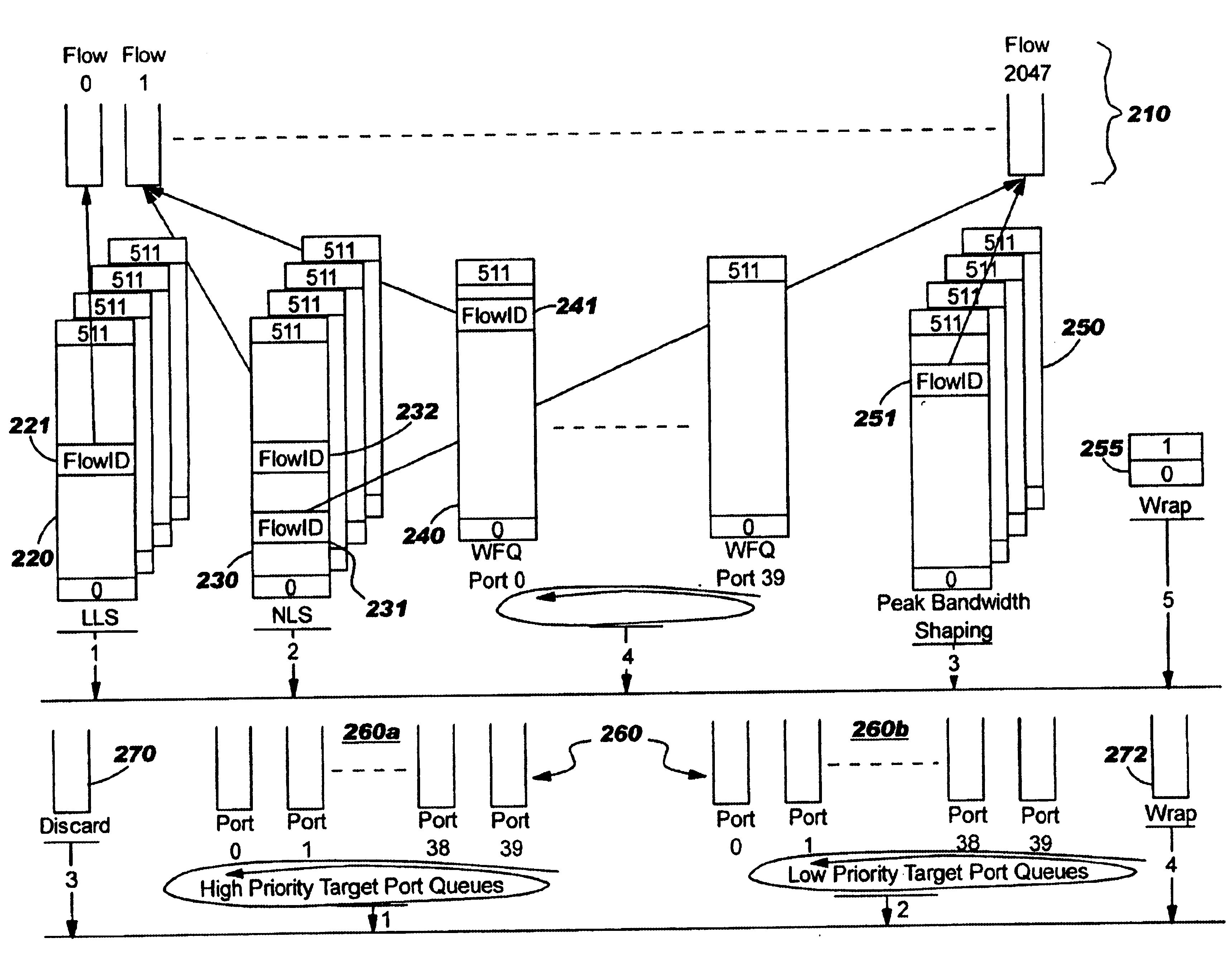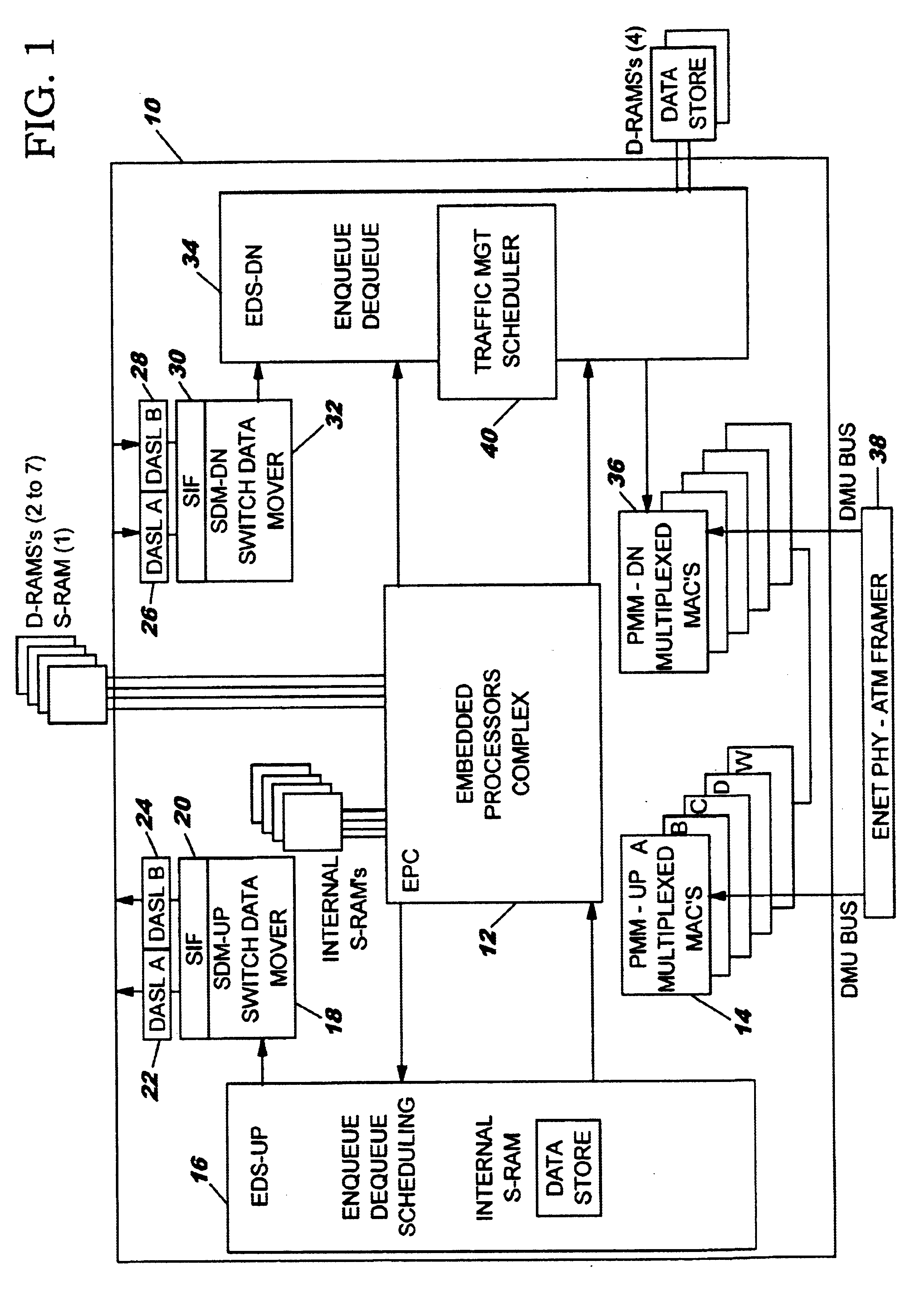Method and system for network processor scheduling outputs based on multiple calendars
a network processor and calendar technology, applied in the field of communication network apparatus, can solve the problems of increasing network load, adding network load, already under strain, etc., and achieve the effect of reducing the perceived delay in service, and reducing the amount of bandwidth resources
- Summary
- Abstract
- Description
- Claims
- Application Information
AI Technical Summary
Benefits of technology
Problems solved by technology
Method used
Image
Examples
Embodiment Construction
In the following description of the preferred embodiment, the best implementations of practicing the invention presently known to the inventors will be described with some particularity. However, this description is intended as a broad, general teaching of the concepts of the present invention in a specific embodiment but is not intended to be limiting the present invention to that as shown in this embodiment, especially since those skilled in the relevant art will recognize many variations and changes to the specific structure and operation shown and described with respect to these figures.
FIG. 1 shows a block diagram of the interface device chip that includes the substrate 10 and a plurality of subassemblies integrated on the substrate. The sub-assemblies are arranged into an upside configuration and a downside configuration, with the “upside” configuration (sometimes also referred to as an “ingress”) referring to those components relating to data inbound to the chip from a data t...
PUM
 Login to View More
Login to View More Abstract
Description
Claims
Application Information
 Login to View More
Login to View More - R&D
- Intellectual Property
- Life Sciences
- Materials
- Tech Scout
- Unparalleled Data Quality
- Higher Quality Content
- 60% Fewer Hallucinations
Browse by: Latest US Patents, China's latest patents, Technical Efficacy Thesaurus, Application Domain, Technology Topic, Popular Technical Reports.
© 2025 PatSnap. All rights reserved.Legal|Privacy policy|Modern Slavery Act Transparency Statement|Sitemap|About US| Contact US: help@patsnap.com



